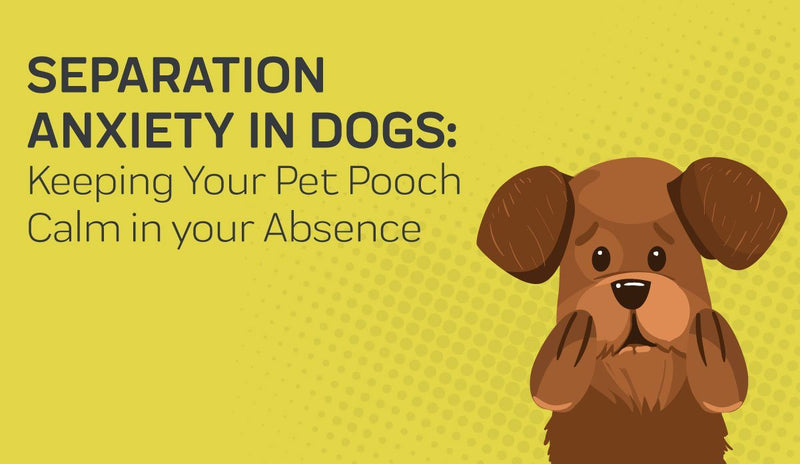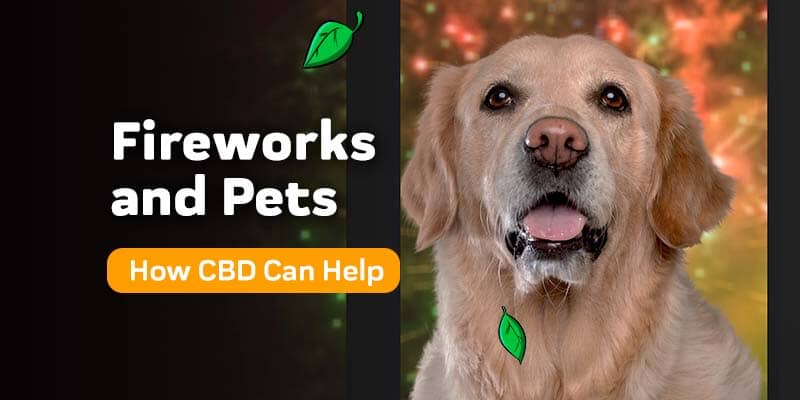Introduction to Separation Anxiety in Dogs
Do you think twice before leaving your dog alone?

Well, you are not the only dog owner dealing with this dilemma. Dogs of almost all breeds tend to act destructively when their owners leave them on their own. As a result of their uneasiness with the situation, dogs start exhibiting certain behaviors and symptoms.
While effective training can address some of these issues, some symptoms point to considerable suffering. Therefore, you need to understand the basics of separation anxiety in dogs. Otherwise, you might not be able to keep your pet pooch calm in your absence.
What is Separation Anxiety in Dogs?
Separation anxiety is a condition where common symptoms associated with distress accompany other signs on part of the dog. For instance, your dog might start showing signs of anxiety. When you have an anxious puppy, you have to be mindful of symptoms such as drooling.
The condition manifests when the dog is away from the company of his or her guardian. The separation causes them to feel upset, and often result in the dog making attempts to escape. Eventually, these efforts can result in injury or even destruction of your belongings.
There are several common signs of dog anxiety. Urination is a symptom, especially if the dog relieves himself in different parts of the home. Keep in mind the symptoms can become more severe over time, and therefore, you have to seek means of easing separation anxiety in dogs.
For this, you first need to spot the signs of anxiety, such as your dog howling. Separation anxiety can cause your dog to start howling the moment you step out of the door. Moreover, when you return home, your dog might react as though you have been away for a decade.
To overcome this condition, you have to train your dog to spend time on his own. As is the case with other forms of training, separation training also proves effective. However, it might not be possible to completely stop anxiety in dogs, but you can nonetheless manage the symptoms.
Can Your Dog Simulate Anxiety?
An issue when it comes to separation anxiety with dogs is that some dogs learn to simulate the condition. If you display considerable affection during your early interaction with your pet, there is a chance that your dog develops a strong attachment to you.
Over time, your dog may pick up some behaviors that are similar to the symptoms of separation anxiety. However, these signs of separation anxiety in puppies may be the direct result of simulated anxiety. A common mistake dog owners make is paying extra attention to their pets after being absent.
For instance, if you spend a couple of hours with your dog after getting home from work, your dog gets used to your undivided attention and affection. If, in case, you are unable to do so, your dog will feel depressed. Sometimes, the symptoms are so severe as to cause dog owner anxiety.
Why Addressing the Underlying Cause is Important
The key to treating separation anxiety in dogs involves a blend of training and treatment methods. As mentioned, you have to get your dog used to the idea of spending time away from you, starting from short periods and increasing the duration over time.
We will cover the treatments and training methods in the following sections.
The Common Signs and Symptoms of Separation Anxiety
The most viable way for you to spot the risk of separation anxiety in your pet pooch is learning about the signs and symptoms dogs display. Here is a brief overview: This is one way to ease the anxiety
Soiling the House in Your Absence
In some cases, dogs relieve themselves when they are away from their guardian. Do note that this is only a symptom of separation anxiety if your dog soils the house in your absence. If he or she does it in your presence sometimes, then there is a chance that the condition isn’t causing this behavior.
Persistent Howling or Barking
Some dogs tend to start howling or barking the moment their owner steps out of the house. They continue barking or making other noises sporadically over the duration of their separation from their guardian. There is a good chance your neighbor will complain of your dog howling constantly. Generally, howling and barking caused by separation anxiety are different from the normal noises that your dog makes.
Destroying Household Objects
Your dog might decide to act out when you are not around. Some dogs display aggressive behavior when separated from their owners. Even dogs that don’t have separation anxiety can show destructive behavior. However, dogs experiencing anxiety are more destructive.
You are likely to experience broken windows, damage doors, and other objects. In fact, the behavior can get so aggressive that your dog might end up hurting himself. It is quite likely that your dog will refrain from this behavior in your presence.
Chewing on Different Items
In addition to the destructive behavior, your dog might start chewing on different objects. These may be soft items, such as pillows and cushions. However, it isn’t uncommon for dogs to gnaw on windowsills and any surface they come across, the reason being that they feel anxious.
Attempting to Escape the Surroundings
Your dog might attempt to break through and follow you when you exit your home. The separation anxiety causes your dog to long for your presence. As a result, he might attempt to escape his current surroundings.
The behaviors that your dog might display include trying to dig a path through windows and doors. Again, this might injure your dog’s teeth and nails. If you notice broken nails or teeth, or scraped paws, you should take your dog to the vet. All these signs indicate severe anxiety in dogs.
Pacing Around
Your dog might adopt a certain walking or pacing pattern in your absence. For instance, your dog might walk up and down in an area, following a straight path with no variation. As mentioned, there is a good chance that your dog might not display this symptom when you are present.
Do All Dogs Develop Separation Anxiety?
Dogs with separation anxiety symptoms have only one thing in common: an inability to deal with separation from their guardian. The question that comes to mind here is whether or not all dogs develop separation anxiety. There are no major links between separation anxiety and breed.
Therefore, regardless of your dog’s breed, your dog might be at risk of develop separation anxiety. Of course, some breeds tend to adjust better to loneliness, but that requires training. However, there are certain risk factors for separation anxiety in dogs, including adoption.
Dogs adopted from shelters tend to have a higher tendency of separation anxiety. Puppies raised by a single family or guardian from an early age adjust better to their environment. However, constant changes in ownership can cause anxiety.
Understanding the Common Causes
There are some common causes of this condition.
Relocating to a New Place
Often, dogs don’t adjust well to a new place. If you relocate and move into a new home, there is a chance that your dog might not adjust right away. Hence, there is a risk that your dog develops separation anxiety. The unfamiliar surroundings coupled with your absence can cause the symptoms.
Absence of Family Members
A majority of dogs take their time in adjusting to the absence of the people they spend most of their time around. For instance, the death of a family member can trigger the symptoms of separation anxiety.
A Change in Caretaker
This cause is relevant to dogs adopted from shelters or moving from one owner to the next. A change in guardian can trigger feelings of anxiety, which can be challenging to manage for the dog.
Different Schedule
As with changes in environment and guardian, a change in lifestyle can develop separation anxiety. This is likely to occur if the guardian changes his or her schedule. For instance, if the owner starts working from home instead of going to the office from 9 to 5, this can disrupt the dog’s routine.
Now, whereas you could have trained your dog to be without you for a certain number of hours, you will now be present most of the time. In this situation, even if you decide to leave your dog alone for a short period, you can expect to notice symptoms of separation anxiety.
Medical Problems That Can Cause Separation Anxiety
In some cases, the symptoms your dog is displaying are not caused explicitly by separation anxiety but by another cause. For instance, some medical issues can cause your dog to act in a way that he would when separated from you for a long time.
It is thus important to check if certain medical problems are triggering this behavior. Ruling out the medical problems will give you a clear indication that your dog is suffering from separation anxiety. Here are a couple of medical issues that can cause symptoms of separation anxiety:
Incontinence
As you know by now, a dog dealing with separation anxiety might relieve himself randomly and in any part of the house. It is possible that this occurs only in your absence, thereby leading you to believe that the cause of this behavior is anxiety.
However, this might not be a case of your dog acting out when left alone. Rather, your dog may have a condition called incontinence, where he has little control over his bladder. In fact, a number of underlying medical conditions can cause incontinence, including bladder stones.
Therefore, you have to make sure your dog isn’t incontinent before you decide to train him to overcome separation anxiety.
Medications
Certain medicines can also cause your dog to soil the house in your absence. Make sure you ask your vet about this before giving your dog any medication. You have to be aware of the symptoms occurring due to a particular medicine, so that you can eliminate separation anxiety as a probable cause.
Behavioral Problems That Cause Symptoms Similar to Separation Anxiety
In addition to medical conditions and medications, your dog might also develop certain behavioral problems that produce symptoms similar to separation anxiety. Obviously, you have to rule these problems about before you can move ahead with treatment.
Lack of Adequate House Training
Lack of adequate house training can lead to your dog voiding himself around the house. You may have to put your dog through house training once again to overcome this issue. However, if your dog starts showing symptoms out of the blue and only in your absence, you can rest assured that he has anxiety.
A Young Pup Just Being a Young Pup
Being destructive and unruly is a part of a pup’s life. Hence, don’t be surprised if your young pooch tries to chew through different items or attempts to dig holes in different parts of the house. That said, if this behavior continues over time, you should consult a vet.
Marking the Territory
Dogs tend to mark their territory when they notice a threat. The threat could be another pet or even a new family member. Regardless of the event, your dog might show symptoms similar to that of separation anxiety.
Boredom
Last, but not the least, a bored dog will definitely act out in some way. Your dog’s destructive behavior might be the result of a lack of physical activity or stimulation. Your dog might simply be looking for something to do.
Why Keeping Your Dog Engaged Is a Good Idea
As mentioned above, if your dog feels bored or has nothing to do, he/she is likely to indulge in disruptive behavior. Therefore, it is important that your keep your dog engaged, especially in your absence. There are a couple of tips you can follow:
Crate Training
Not every dog adapts well to crate training. However, you can try crate training if your dog is showing clear signs of separation anxiety. Have your dog spend some time in the crate in your presence. If your dog responds positively to being in the crate, you are good to go.
On the other hand, if your dog starts exhibiting any negative behavior, you are better off avoiding crate training altogether.
Physical Activity
Make sure the time you spend with your dog involves a significant amount of physical activity. You can take your dog out for a walk every day, or even enroll in an exercise class with him.
How Medication Can Help
Some medications can help dogs manage their behavioral issues. You should always ask a professional vet before you give your dog any medicine. Medication can prove a useful tool for preventing and managing separation anxiety, especially in severe cases.
Several medicines help curb anxiety in dogs. The medication helps the dogs relax and therefore they don’t demonstrate any destructive behavior in the absence of their guardians.
You can also opt for CBD or hemp oil for dogs’ anxiety.
CBD for Dogs
CBD is an herb extracted from the cannabis plant. For dogs, CBD extracts are taken from the hemp plant, which means they are organic, safe, and deliver the results you expect. There are no side effects or reactions.
CBD products are the ideal alternative to medication that might contain certain chemicals or substances that can harm your dog’s health. So, you can give your dog CBD, after consulting your vet.
CBD promises a number of health benefits for your pet pooch, including:
- Effective pain management
- A stronger immune system
- Reduction in inflammation
- Better heart health
- Prevention of inflammatory bowel disease
The Best Products You Can Use
Here are some of the best products you can use for treating your dog’s separation anxiety:
INNOVET PET CALMING CBD DOG TREATS
These dog treats are actually tasty delights that your dog will love to consume. The flavor is perfect for your dog’s palate, and they are highly effective for treating anxiety.
INNOVET PET CALMING CBD OIL FOR DOGS
Simply add the oil to your dog’s meals and you good to go. The oil acts quickly and delivers the results you are looking for.
INNOVET PET CALMING CBD DOG CHEW
These flavored chews are the perfect medication for dogs that have a picky palate.
Conclusion
So, by now, you are well aware of separation anxiety and what it entails for your dog and yourself. You have to look out for the signs and symptoms. However, at the same time, you need to be sure that your dog is suffering from separation anxiety and not any other condition that is causing him to act out in this way.
The treatment methods are available, but make sure your talk to your vet before you proceed with any medication or training. CBD is proving an effective means of helping treat anxiety in dogs and could therefore be the perfect remedy for helping your dog to manage the condition.
Sources:
Cannabidiol as a Potential Treatment for Anxiety DisordersDogs Diagnosed With Separation Anxiety
Use of Cannabidiol for Canine Medical Conditions
Cannabidiol Induces Rapid-Acting Antidepressant















